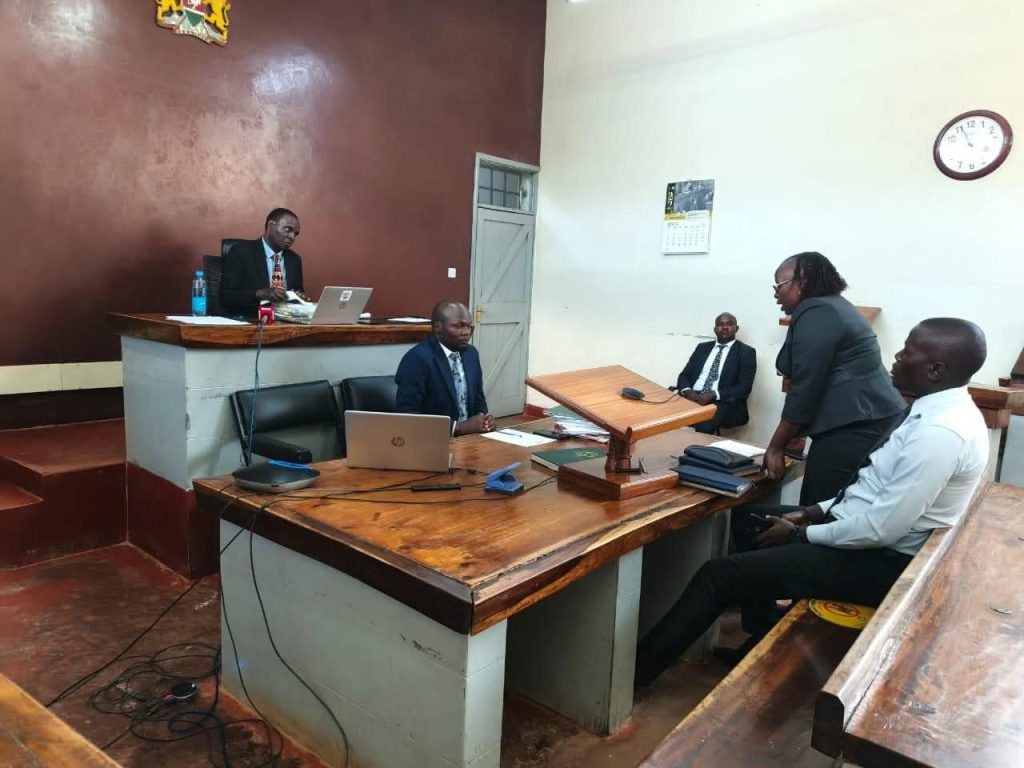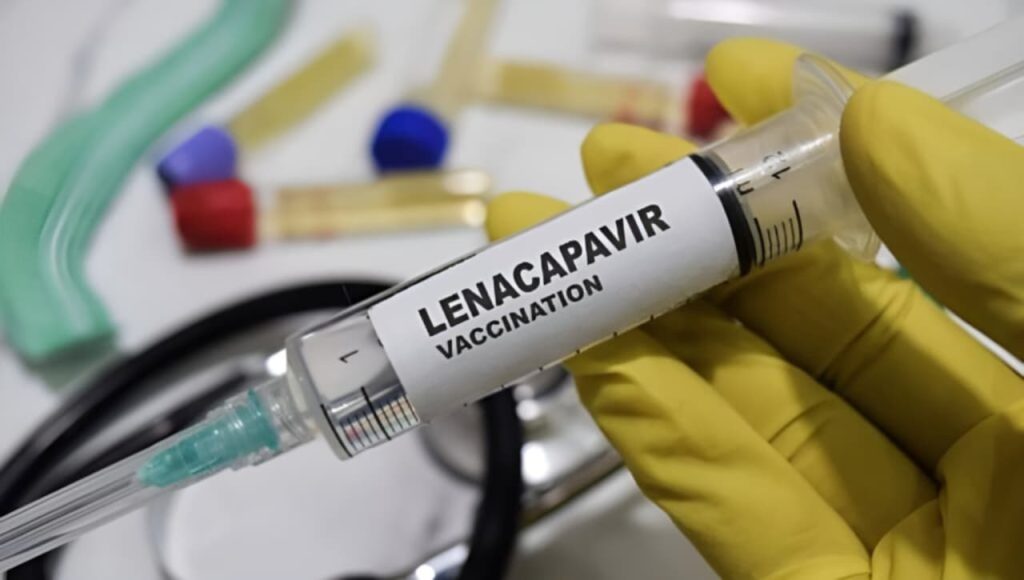Two injections, one hope: How Lenacapavir is rewriting story of HIV from Western Kenya to the world

The morning mist rises gently from the ground in Ugunja, Siaya County, turning the dirt paths into thin red veins cutting through the lush green of western Kenya’s sugarcane fields.
Life here begins early the clinking of jerricans at the water point, the rhythmic chop of firewood, and the laughter of children playing barefoot on the clay roads.
Yet beneath the everyday routine lies a heavy truth one that has shaped generations, broken families, and stolen futures.
In this small, forgotten corner of Kenya, HIV is not a headline it is a lived reality. It is written into the history of almost every home, whispered about in funerals, and stitched into the memories of those who remain.
“I grew up watching neighbours disappear,” says Atieno, a 25 year old mother of two, standing outside a small tin roofed house. Her hands are rough from farm work, her eyes older than her years.
“First it was my uncle. Then my sister. They said it was the disease. We never even spoke its name.”
Atieno’s story is echoed hundreds of kilometres away in Busia County, near the busy border with Uganda, where Bwire, a 32-year-old boda boda rider, has seen the same tragedy unfold in a different landscape.
“We bury people too often here,” he says, leaning on his motorbike. “It’s like every month someone is gone. My best friend died last year. We were the same age. HIV still kills.”
Their faces tired, etched with lines of struggle, their skin weathered by sun and hardship are portraits of a generation caught between the past and the future.
They represent the millions for whom HIV is not a statistic, but a constant shadow over every decision, every relationship, every dream.
Kenya’s fight against HIV has been long and brutal. The first cases appeared in the 1980s, and by the 1990s the epidemic was claiming tens of thousands of lives annually.
By the early 2000s, HIV had cut life expectancy by more than a decade. Entire villages lost parents, teachers, and breadwinners. In Siaya and neighbouring Homa Bay, HIV prevalence soared past 20%, among the highest in the world.
There has been progress. Antiretroviral therapy (ART) transformed HIV from a death sentence into a manageable condition. The introduction of pre-exposure prophylaxis (PrEP) a daily pill that reduces the risk of infection by over 90% marked another milestone.
Kenya has become a regional leader in prevention and treatment, with 1.3 million people currently living with HIV, and a national prevalence that has dropped to 4.7%.
Yet, the virus continues to exploit the cracks. According to UNAIDS, Kenya recorded 22,000 new infections in 2023, with over 50% among adolescents and young adults aged 15–24.
In counties like Siaya, Kisumu, and Busia, prevalence remains stubbornly high between 13% and 17% far above the national average.

Uganda 1.4 million people living with HIV, 54,000 new infections in 2023. South Africa 7.8 million people living with HIV the world’s largest epidemic with 150,000 new infections annually.
Nigeria 1.8 million people living with HIV, but prevalence is lower (1.3%) thanks to aggressive prevention campaigns.
Globally, about 39 million people live with HIV, and despite decades of progress, 1.3 million were newly infected in 2023. Sub-Saharan Africa remains the epicentre, accounting for 65% of global infections.
Despite billions spent, the world is off track to meet the UNAIDS target of ending AIDS as a public health threat by 2030. Behavioural change alone has plateaued. Condoms, while effective, are underused.
Daily PrEP is powerful, but adherence is weak. Something more is needed something simpler, longer-lasting, more discreet.
In 2025, Kenya made a bold decision: to become one of the first countries in Africa to roll out Lenacapavir, a long-acting injectable HIV prevention drug that promises up to 99% efficacy. Administered just twice a year, the drug represents a revolutionary leap forward.
Lenacapavir is a capsid inhibitor a class of drugs that targets the protein shell surrounding HIV’s genetic material. By binding to the capsid, lenacapavir disrupts critical stages of the viral life cycle: nuclear entry, replication, assembly. Without a functioning capsid, HIV cannot infect cells.
Adherence One injection every six months eliminates the daily pill burden that undermines traditional PrEP.
Privacy In small communities, where stigma can kill, a discreet injection offers protection without the social risks of visible pills.
Durability Lenacapavir remains active for over 180 days, providing a long window of protection.
Clinical trials across Africa have been remarkable. In a 2023 study of high-risk women in Uganda and South Africa, no participants who received lenacapavir became infected, compared to an infection rate of 1.7% in the placebo group. Among men and transgender women in Kenya and Brazil, the infection rate was nearly zero.
“From a scientific standpoint, this is unprecedented,” says Dr. Miriam Odhiambo, a NASCOP researcher. “For the first time, we have a prevention tool that overcomes the biggest barrier human behaviour.”
The journey from laboratory to clinic has been anything but smooth. In 2022, early clinical trials generated global excitement, but questions remained about cost and accessibility.
In 2023, WHO and UNAIDS declared long-acting prevention a “game-changing priority.” By 2024, Kenya had joined a consortium of early adopters including South Africa, Uganda, and Brazil to negotiate affordable pricing.
In 2025, WHO officially recommended lenacapavir as part of combination prevention strategies, and Kenya’s Ministry of Health approved it for national use.
The government committed to an ambitious plan: start with 30,000 people in high-risk groups by 2026, scaling to 200,000 by 2028.
Cost: Even with voluntary licensing and donor support, the drug costs around $40 per person per year a significant burden for a public health system already stretched thin.
Infrastructure Cold chain storage, staff training, and injection delivery logistics require massive investment.

Misinformation: Social media rumours that the injection is a “fertility drug” or a “government microchip” threaten uptake.
Equity Urban centres like Nairobi and Kisumu may benefit first, while remote areas risk being left behind.
“This is the most significant HIV prevention rollout since ART,” says Dr. James Mwangi of KEMRI. “But we must ensure it doesn’t become a privilege for the few.”
For people like Atieno and Wekesa, the promise of lenacapavir is more than medical it’s deeply personal.
Atieno received her first injection in May 2025. Six months later, she returned for her second dose the first time in her adult life she felt protected. “I used to worry every time I was with someone,” she says. “Now I feel I have some control.”
Her transformation is visible. The dullness in her skin has faded, replaced by a soft glow. The heaviness in her eyes is lifting. She still works long days in the fields, but she walks with a confidence she never had before.
Bwire’s experience is similar. At first, he was skeptical. “I thought it was for women,” he admits. But after losing a friend to AIDS, he decided to try. “I feel lighter,” he says. “I don’t live in fear every day.”
Their stories mirror thousands more across Nyanza and western Kenya and increasingly, across Africa. In Uganda’s fishing communities, early pilot programmes show 70% uptake among young men. In South Africa’s urban townships, infection rates among adolescent girls are already dropping. Nigeria is negotiating local manufacturing to expand access to its 1.8 million HIV-positive population.
While headlines celebrate “99% protection,” several crucial truths remain hidden from public view:
It’s not a vaccine. Lenacapavir does not provide lifelong immunity. Missing an injection means losing protection.
It won’t stop other infections, Condoms remain essential to prevent STIs like gonorrhoea and syphilis.
Resistance is a risk, Scientists are monitoring for viral mutations that could undermine the drug.
Inequity could widen,Wealthier regions and populations may benefit first, leaving vulnerable communities behind.
Behavioural complacency is real. Some experts warn of risk compensation where people engage in riskier behaviour because they feel “protected.”
“This is a powerful tool,” says Dr. Winnie Byanyima, Executive Director of UNAIDS. “But it must be part of a comprehensive approach testing, education, condoms, treatment. We cannot inject our way out of HIV.”
Africa, once the epicentre of despair, is now leading the way. Kenya, Uganda, and South Africa are proving that innovation is not the preserve of rich nations.
Their experiences will shape how the rest of the world tackles HIV in the decades ahead.

Global modelling suggests that if long-acting prevention is scaled up to reach 50% of those at risk by 2030, 1.5 million new infections could be averted worldwide.
In sub-Saharan Africa alone, incidence could fall by 60%, saving billions in treatment costs and millions of lives.
For Kenya, the stakes could not be higher. With over 20,000 new infections every year, even a 50% reduction would transform its health landscape saving lives, reducing stigma, and freeing up resources for other pressing needs like cancer, tuberculosis, and maternal health.
As the sun sets over the sugarcane fields of western kenya and Siaya
the vast water mass of Lake Victoria glows in shades of gold and crimson, stretching endlessly beyond the horizon, Atieno watches her children chase a makeshift football down a dusty path.
She still worries about school fees, fish and fishing activities in Siaya County, harvest yields, and the price of maize,sorghum, millet, cassava, sweet potatoes, groundnuts, and vegetables.
But one worry the oldest, deepest one has begun to loosen its grip.
“Maybe my children will grow up in a world without HIV,” she says, smiling faintly. “Maybe they won’t have to bury their friends.”
In Busia, Bwire finishes his day’s rides and parks his boda boda outside a small clinic. A nurse greets him with a familiar smile and a small syringe. In six months, he will return for another dose a simple act that could change the course of his life.
“This is not just medicine,” he says. “It’s hope.”
Kenya’s journey with lenacapavir is just beginning. There will be setbacks funding shortfalls, misinformation campaigns, logistical nightmares.
But the momentum is irreversible. A once-distant dream a world where HIV is rare, where infection is no longer inevitable is slowly, steadily, coming into view.
From the dusty lanes of Ugunja to the bustling border towns of Busia, from the fishing villages of Uganda to the crowded townships of South Africa, a quiet revolution is unfolding.
It is happening not in laboratories or conference halls, but in the lives of ordinary people farmers, riders, mothers, students who now have a chance to live free from fear.
Two injections a year. That’s all it takes. And for millions like Atieno and Bwire, it is nothing less than the power to rewrite the story of their lives.









